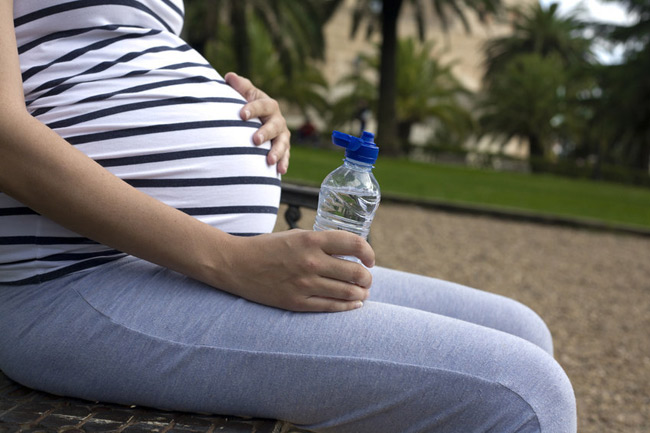
Prenatal exposure to Bisphenol A (BPA), a common chemical used in plastic water bottles and canned food, is associated with measures of obesity in children at age 7, according to researchers from the Columbia Center for Children’s Environmental Health (CCCEH) at the Mailman School of Public Health. The researchers are the first to show associations between prenatal exposure to BPA–94 percent of women studied had the chemical in their urine–and measures of body fat in their school-aged children. Results appear online in Environmental Health Perspectives.
One of the most widely used chemicals, BPA is found in products we use every day like plastic water bottles, metal food cans, and thermal receipt paper. There is a concern that in the body, BPA may act as an endocrine- disrupting chemical, a compound that mimics or blocks hormones produced by the body. BPA has been linked to several health outcomes such as asthma, ADHD anxiety and depression, early puberty in girls, and diabetes, obesity and heart disease in adults.
“This study provides evidence that prenatal exposure to BPA may contribute to developmental origins of obesity as determined by measures of body fat in children as opposed to the traditional indicator of body mass index, which only considers height and weight,” says lead author Lori Hoepner, DrPH, an investigator at the Columbia Center for Children’s Environmental Health and assistant professor in the Department of Environmental and Occupational Health Sciences at SUNY Downstate Medical Center.
Researchers analyzed urine samples and child body composition from 369 mother-child pairs, a subset of CCCEH’s ongoing urban birth cohort study in New York City, from pregnancy through early childhood. BPA exposure was determined by measuring concentrations of total BPA and its metabolites in urine samples collected during the third trimester of the mother’s pregnancy and from children at age 3 and age 5. Height and weight were measured for children at age 5 and age 7; additional body size measurements of waist circumference and fat mass were also collected for children at age 7.
After adjusting for socioeconomic and environmental factors, researchers found that prenatal exposure to BPA was positively associated with fat mass index–a measure of body fat mass adjusted for height, percent body fat, and waist circumference in children at age 7. Children exposed to higher concentrations of prenatal BPA had higher levels of adiposity.
When the data were analyzed separately by sex, there was a significant association between BPA and fat mass index and waist circumference in girls; there was no association between prenatal BPA exposure and body fat outcomes in boys. There was also no association seen between childhood BPA levels and obesity–a finding the authors say indicates a greater level of vulnerability in the prenatal period.
“The evidence that prenatal BPA exposure is associated with measures of obesity in children may be an important underlying factor in the obesity epidemic,” says senior author Andrew Rundle, DrPH, associate professor of Epidemiology and co-director of the Obesity Prevention Initiative at the Mailman School. “Endocrine disrupting chemicals like BPA may alter the baby’s metabolism and how fat cells are formed early in life.”
To reduce exposure to BPA, the National Institute of Environmental Health Sciences recommends avoiding plastic containers numbers 3 and 7, shifting from canned foods to fresh or frozen foods, and, when possible, choosing glass, porcelain, or stainless steel containers, especially for hot food and liquids.